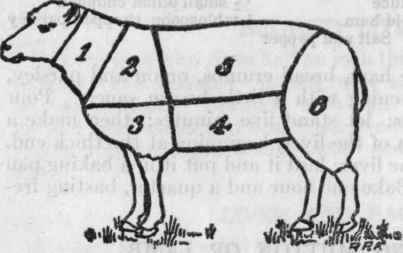Mutton

A lamb is a young sheep. When eaten as meat, lamb is taken from an animal between one month and one year old, with a carcass weight of between 5.5 and 25 kg. The meat of an older sheep is known as mutton.
Milk-fed lamb is from an unweaned lamb, typically 4 to 6 weeks old and weighing 5.5 to 8 kg; this is almost unavailable in countries such as the USA and the UK, where it is considered uneconomic. The flavour and texture of milk-fed lamb when grilled (such as the tiny lamb chops known as chuletillas in Spain) or roasted (lechazo asado) is generally agreed to be finer than that of older lamb. Probably the best area to taste it is in northern Spain, including Asturias, Cantabria, Castile-Leon, and La Rioja.
A sheep is any of several woolly ruminant quadrupeds, but most commonly the Domestic Sheep (Ovis aries), which probably descends from the wild urial of south-central and south-west Asia. For other types of sheep and their close relatives, see goat antelope.
Sheep aficionados know female sheep as ewes, intact males as rams, castrated males as wethers, yearlings as hoggets, and younger sheep as lambs. Note the adjective applying to sheep: ovine; and the collective terms for sheep: flock and mob.
Chefs and diners commonly know sheep meat prepared for food as mutton (compare the French word for "sheep": mouton). The meat of immature sheep, also termed lamb, generally has a reputation as tenderer and appears more often on tables in some western countries. Mutton tastes more flavorful but often seems tougher and fattier than lamb. Lamb commonly features in Mediterranean and Middle Eastern cuisine.
| < Prev | Next > |
|---|
















